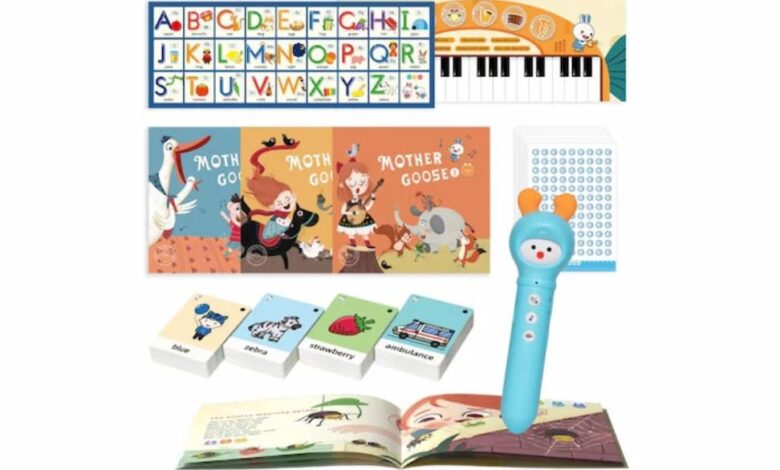How to Choose Safe Preschooler Toys for Your Child?

Preschoolers are naturally curious, energetic, and full of imagination. As they explore the world through play, toys become tools for growth, learning, and joy. However, children aged 3 to 5 are still developing fine motor skills and judgment, so the toys they use must meet higher safety standards to prevent accidents. From choking hazards to harmful chemicals, potential dangers are real if we aren’t careful. Choosing the right toy means balancing fun, learning, and safety. In this article, we will explore the most important factors in selecting safe, age-appropriate toys for preschoolers and how to make confident decisions as a parent or caregiver.
Physical Safety Essentials
When choosing toys for preschoolers, physical safety should always come first. Avoid toys with small detachable parts that could be swallowed. A simple test is to use a toilet paper tube—if the part fits inside, it’s a choking risk. Sharp edges or points can also cause injuries during play. Look for toys that are sturdy and can withstand rough handling without breaking into dangerous pieces. For active children, avoid toys with long strings or cords, as these can pose strangulation hazards. Soft corners, durable builds, and large pieces make for safer options. If you’re wondering what toy would a preschooler play with, think about large puzzles, stacking blocks, and role-play sets—these are usually fun, developmentally appropriate, and safe when chosen carefully.
See also: Weight Loss Process: Guidance on Medicare and Lifestyle
Material Safety Guide
Non-Toxic Material Certifications to Look For
Preschoolers often put toys in their mouths, so materials need to be as safe as possible. Look for toys labeled with certifications such as “BPA-free,” “phthalate-free,” or “non-toxic.” Independent testing marks can also signal that the product has passed safety checks. These labels give parents peace of mind that toys aren’t leaching harmful substances. Additionally, choosing certified non-toxic toys helps reinforce good health habits from an early age. When shopping online, check product descriptions and customer questions to confirm the presence of these certifications.
Avoiding Lead & Phthalates
Lead and phthalates are sometimes found in cheaper plastics and paints. These chemicals can cause long-term health issues when absorbed or ingested. To avoid them, skip toys with strong chemical odors or suspiciously low prices. When in doubt, opt for toys with transparent labeling or from reliable sources. Reading reviews and checking for product recalls can also help parents steer clear of risky options. Government safety agencies often publish updated lists of banned substances, which can be a helpful reference.
Fabric & Plush Toy Safety Standards
Plush toys can be comforting but should meet flame-retardant standards and be washable. Make sure seams are strong to avoid stuffing leakage, and eyes or buttons are securely attached to prevent swallowing. Washable plush toys are not only more hygienic but also longer-lasting, making them safer over time. It’s also wise to avoid plush toys with loose threads or small detachable parts that could pose a choking hazard. Checking for safety labels like “ASTM F963” or “EN71” can provide extra assurance of quality.
Developmental Safety Considerations
Toys that match a preschooler’s developmental level are not only more engaging but safer. Frustrating or overly complex toys can lead to misuse or breakage, increasing the risk of injury. Choose toys that challenge gently, such as shape sorters, building kits, or pretend play sets. Interactive storybooks and musical instruments also foster healthy development while keeping play safe. If your child seems bored or confused, it may be a sign the toy isn’t age-appropriate. Safe toys grow with your child’s abilities without pushing them too far too fast.

Smart Shopping Practices
Being a mindful shopper can prevent many safety issues before they happen. Always read age recommendations and safety warnings on the packaging. Inspect toys before purchasing to check for loose parts or poor construction. Don’t be swayed by trends or aggressive marketing—classic, simple toys are often the safest. Online reviews and safety recall databases can also guide your choices. Buying fewer, higher-quality toys reduces clutter and increases the chances that each toy is safe and well-loved. Pay attention to how toys are packaged; excessive plastic or hard-to-open cases may indicate unnecessary risks or waste. When possible, involve your child in the process—they may surprise you with thoughtful preferences.
Conclusion
A safe toy is one that supports growth, sparks imagination, and gives parents peace of mind. By staying aware of physical risks, understanding materials, and choosing developmentally appropriate options, you create a space where your preschooler can learn and explore safely. Consistent safety checks and smart shopping habits keep the fun going while reducing avoidable hazards. The joy of play is richest when it’s built on a foundation of care and intention.




